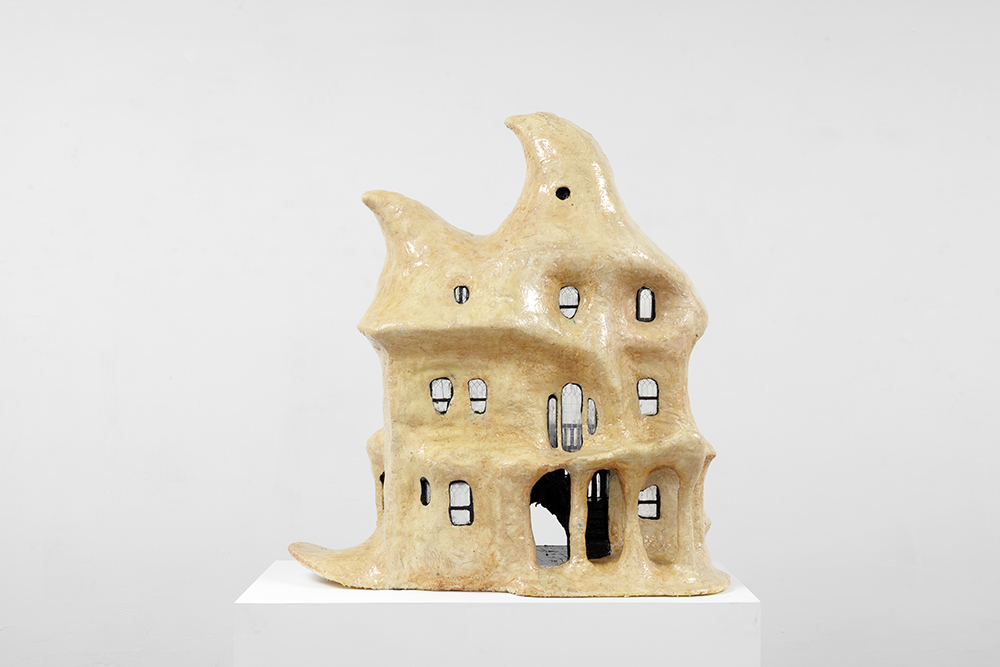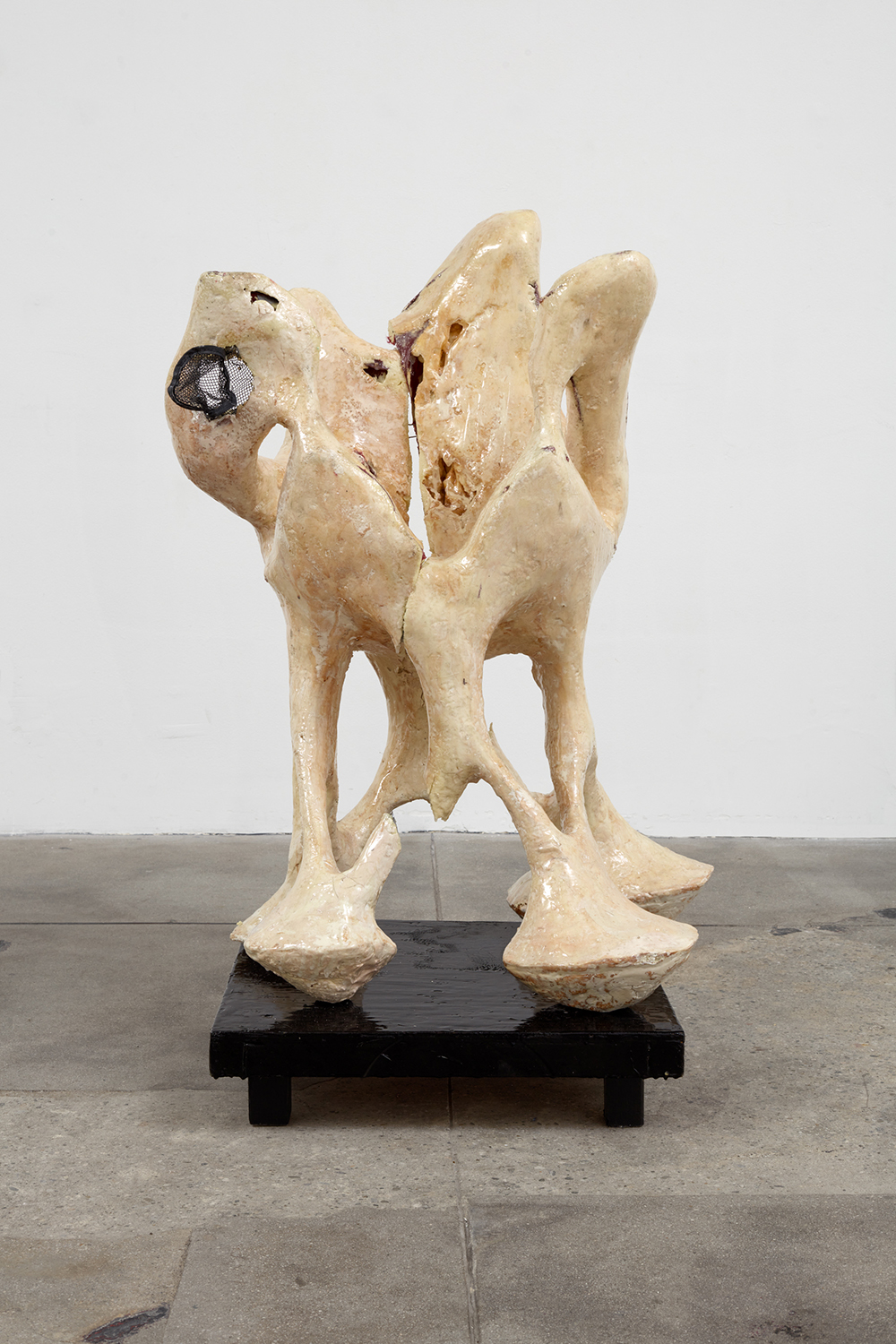Transformation in its most expansive and contradictory sense was at work throughout Claire Chambless’ exhibition, “Role Play.” Both individually and taken as a choreographed ensemble, the work—while clearly influenced by such abstract surrealists as Miró and Tanguy—probed a full spectrum of contentious forces.
Chambless’ sculpture TOTAL MEMORY (2023) came at (or fell away from) the viewer like a Miro-esque beast, tenuously attached to its packing-crate-like platform and plywood backstop—an ambulatory skeleton, or conceivably those of two “creatures,” once at odds, now joined to monstrous common purpose. In addition to wood and steel, Chambless uses materials like hydroxyapatite, a calcium phosphate material more commonly found in dental settings, enameled here with epoxy resin. Skeletal limbs are variously spiraled and encrusted with costume jewelry pearls—“eyes” or “coral” giving life and luster to this lumbering form. Its orifices appear to vomit the memory foam that fills them. Sewing pins both fasten the structure and stand in for ravenous incisors—form and function obfuscated in a seemingly subaquatic metamorphosis.
From the far side of this beast, Shelley’s Doppelganger I (2024) looked almost like four Gumby-like creatures playing a contentious cat’s cradle with their winding limbs. On closer approach, the work—the armature for which is a folding camp chair (replete with sunken mesh cupholder now dangling from its thumb-like “arm”)—gave the impression of an amorphous hand-like formation arrested in some strange blastocystic mitosis. An intimation of foreshadowing shared by all the works sustained the continuity between them, which was underscored by the title of this piece, as Shelley’s gravestone famously borrows from Shakespeare’s song for Ariel (The Tempest): “Nothing of him that doth fade / But doth suffer a sea change / Into something rich and strange….”

Claire Chambless, Ghost Complex II, 2024. Courtesy of the artist and Carlye Packer.
Throughout the exhibition, works threatened to cohere or fissure—bodies and spirits divided against their own psyches, or, as the show’s title suggests, engaged in a kind of role play—within themselves and with one another. The sense of haunting is exemplified by what might be a model for a haunted house (Ghost Complex II, 2024)—its exterior skin and roof molded in laminated hydroxyapatite, presenting a shrouded silhouette shielding what is revealed to be a more conventional, rectilinear, three-story array of domestic spaces obscured behind arched and lancet windows—suggesting the ambiguous and ephemeral confabulations of the moment and past repositories of hidden, decaying spirits.
In the same vein, the skeletal configuration of TOTAL MEMORY is answered by a kind of willfully flamboyant monster in the form of Spare Me the Heroics (2020–23), in which a lumbering, well-upholstered form, topped by what look like two pearl-encrusted wheels of yellowish foam and crowned by a lamprey-mouth orifice at its top, is cloaked in a cape of oyster shells—an absurd Lewis Carroll touch that echoes something of the grandiosity alternately mocked and heralded in the preceding works. In a suite of three masterful pen-and-pencil drawings on paper, Chambless animates possible variations on the choreography of these four (of seven) sculptures, underscoring the sense in which they relate to each other, and the extent to which their variable configurations and trajectories devise shifting and more than slightly chimerical narratives.


